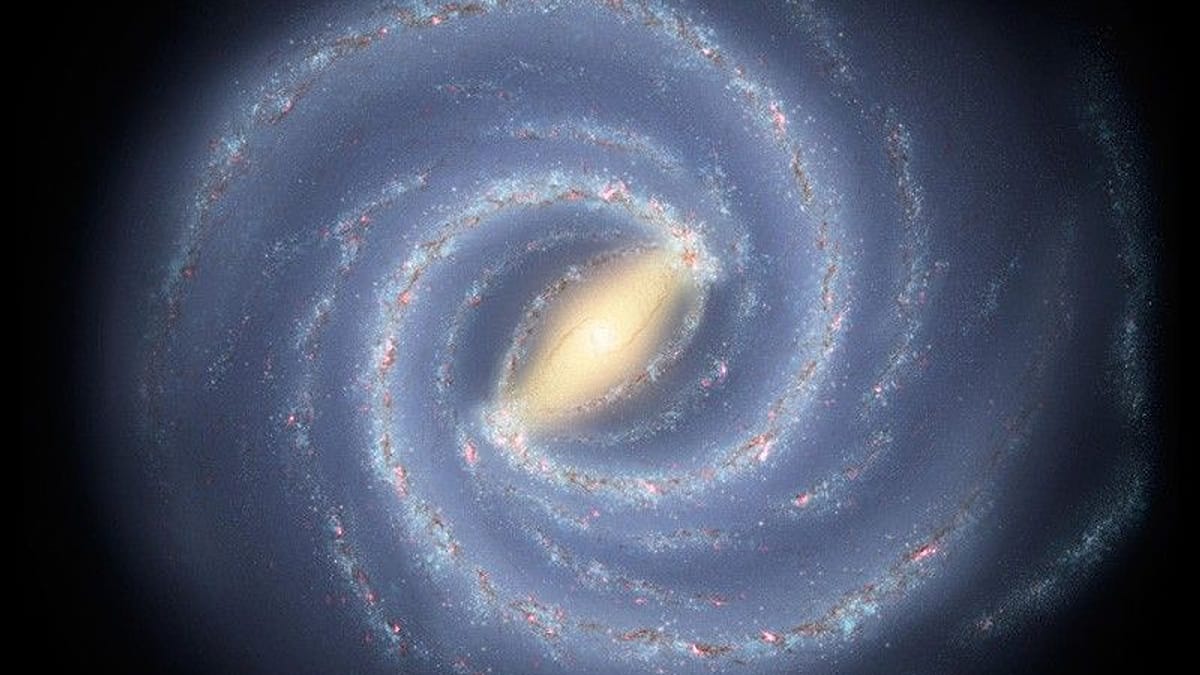Published on
A new breakthrough AI-assisted simulation of the Milky Way is giving scientists their most detailed look yet at how our galaxy evolves.
Tracking more than 100 billion individual stars across 10,000 years of evolution, the model offers a remarkable level of resolution that astrophysicists have been chasing for decades.
Until now, the most advanced simulations bundled stars into large groups, smoothing out the small-scale physics that shape how galaxies grow and change.
The new method changes that entirely. By blending deep learning with traditional physics-based modelling, the team was able to generate a galaxy-scale simulation 100 times faster than previous techniques, while using 100 times more stars.
Why simulating our galaxy has been so hard
To understand how the Milky Way formed and continues to evolve, scientists need models that capture everything from the galaxy’s vast spiral structure down to the behaviour of individual stars and supernovae.
But the physics involved – gravity, gas dynamics, chemical enrichment and explosive stellar deaths – unfold across wildly different timescales.
Capturing fast events like supernova explosions requires the simulation to step forward in tiny increments, a process so computationally demanding that modelling a billion years of galactic history could take decades.
The AI shortcut
The project, a collaboration led by the researcher Keiya Hirashima at the RIKEN Center for Interdisciplinary Theoretical and Mathematical Sciences (iTHEMS) in Japan, alongside colleagues from the University of Tokyo and the University of Barcelona. It was recently presented at SC’25 (International Conference for High Performance Computing, Networking, Storage, and Analysis).
Hirashima’s team solved this issue by introducing a deep learning surrogate model. Trained on high-resolution simulations of supernova behaviour, the AI learned to predict how gas disperses in the 100,000 years following an explosion.
The main simulation could then advance much more quickly, while preserving the detail of individual supernova events. The approach was validated using data from Japan’s Fugaku supercomputer and the University of Tokyo’s Miyabi system.
The result is a full-scale Milky Way simulation that achieves true individual-star resolution and runs far more efficiently.
One million years of galactic evolution now takes just 2.78 hours, meaning a billion years could be simulated in around 115 days instead of 36 years.
‘A genuine tool for scientific discovery’
While the achievement is a milestone for astrophysics, its implications stretch well beyond space science.
“Similar methods to ours could be applied to simulations of cosmic large-scale structure formation, black hole accretion, as well as simulations of weather, climate, and turbulence,” the paper states.
Hybrid AI-physics methods like this could dramatically accelerate those models, potentially making them both faster and more accurate.
“I believe that integrating AI with high-performance computing marks a fundamental shift in how we tackle multi-scale, multi-physics problems across the computational sciences,” Hirashima said.
“This achievement also shows that AI-accelerated simulations can move beyond pattern recognition to become a genuine tool for scientific discovery – helping us trace how the elements that formed life itself emerged within our galaxy,” he added.
The next step for the team will be scaling the technique further and exploring its applications to Earth system modelling.

